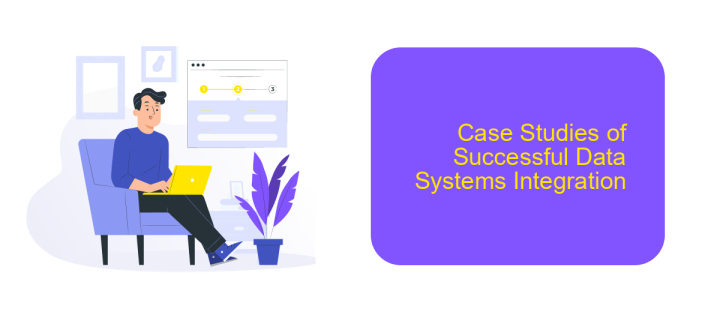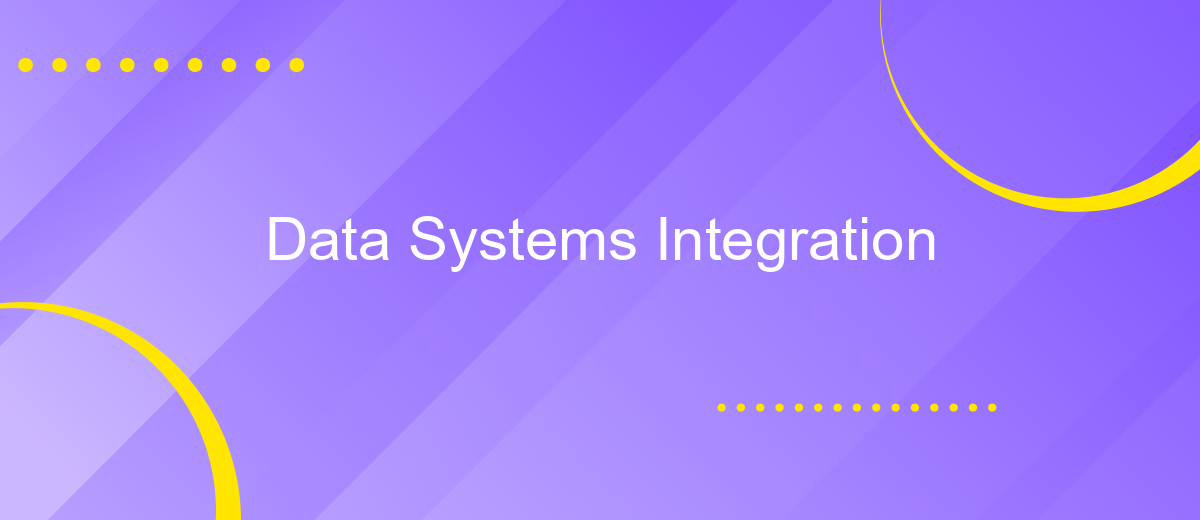Data Systems Integration
Data systems integration is a critical process in modern enterprises, enabling seamless communication and coordination between disparate software applications and databases. By consolidating data from various sources, organizations can enhance operational efficiency, improve decision-making, and foster innovation. This article explores the key benefits, challenges, and best practices for achieving effective data systems integration in today's technologically advanced business environment.
Introduction to Data Systems Integration
Data systems integration is a crucial process for modern businesses, enabling seamless communication and data exchange between disparate systems. This integration ensures that information flows smoothly across various platforms, enhancing operational efficiency and decision-making.
- Streamlined data management
- Enhanced data accuracy
- Improved collaboration between departments
- Cost-effective operations
One of the tools that facilitate data integration is ApiX-Drive. This service allows businesses to connect different applications and automate data transfer without requiring extensive coding skills. ApiX-Drive supports a wide range of integrations, making it easier for organizations to synchronize their data and improve overall productivity.
Challenges and Benefits of Data Systems Integration

Integrating data systems presents a range of challenges, including data inconsistency, security risks, and the complexity of merging disparate systems. Organizations often struggle with ensuring data quality and maintaining data integrity across various platforms. Additionally, the process can be time-consuming and requires specialized expertise to manage the technical aspects of integration. Security concerns are paramount, as integrating multiple systems can create vulnerabilities that need to be addressed to protect sensitive information.
Despite these challenges, the benefits of data systems integration are substantial. It enables more efficient data management, facilitates real-time data access, and improves decision-making by providing a unified view of information. Tools like ApiX-Drive simplify the integration process by offering user-friendly interfaces and automated workflows, reducing the need for extensive technical knowledge. This not only saves time but also minimizes errors, allowing businesses to focus on leveraging data for strategic advantage. Overall, the integration of data systems can lead to enhanced operational efficiency and a competitive edge in the market.
Methodologies for Data Systems Integration

Integrating data systems is a crucial task for modern enterprises aiming for seamless data flow and enhanced operational efficiency. Effective methodologies ensure that disparate systems communicate efficiently, reducing data silos and enhancing data accessibility.
- Point-to-Point Integration: This method involves direct connections between systems, allowing for real-time data exchange. It's suitable for simple integrations but can become complex as the number of connections increases.
- Middleware Integration: Middleware acts as an intermediary, facilitating communication between different systems. This approach reduces complexity and improves scalability.
- API-Based Integration: Utilizing APIs allows systems to communicate through standardized protocols. Services like ApiX-Drive simplify API integration, providing a user-friendly interface for connecting various applications without extensive coding.
- ETL (Extract, Transform, Load): This method involves extracting data from source systems, transforming it into a usable format, and loading it into a target system. ETL processes are essential for data warehousing and analytics.
Choosing the right integration methodology depends on the specific needs and complexity of the data systems involved. Tools like ApiX-Drive can significantly streamline the integration process, enabling organizations to achieve efficient and reliable data connectivity with minimal effort.
Case Studies of Successful Data Systems Integration

Successful data systems integration can significantly enhance operational efficiency and decision-making processes. One notable example is a retail company that integrated its inventory management system with its e-commerce platform. This integration enabled real-time inventory updates, reducing stockouts and overstock situations.
Another case involves a healthcare provider that integrated its electronic health records (EHR) system with a patient management system. The seamless data flow between these systems improved patient care by providing healthcare professionals with comprehensive and up-to-date patient information.
- A financial institution that integrated its customer relationship management (CRM) system with its financial transaction database, resulting in personalized customer service and targeted marketing campaigns.
- A manufacturing firm that linked its supply chain management (SCM) system with its production planning software, optimizing resource allocation and minimizing production delays.
- An educational institution that connected its learning management system (LMS) with its student information system (SIS), enhancing administrative efficiency and student engagement.
Services like ApiX-Drive play a crucial role in these integrations by providing tools that automate data synchronization between different systems. By simplifying the integration process, ApiX-Drive allows organizations to focus on leveraging their data for strategic advantages rather than dealing with technical complexities.


Conclusion and Future Trends in Data Systems Integration
In conclusion, the integration of data systems is a pivotal aspect of modern business operations, providing seamless connectivity and enhancing data-driven decision-making. Effective integration strategies not only streamline workflows but also ensure data consistency and accuracy. As organizations increasingly adopt cloud-based solutions and APIs, the need for robust and scalable integration platforms becomes more pronounced. One such solution is ApiX-Drive, which offers a user-friendly interface and extensive compatibility with various applications, making it an ideal choice for businesses looking to automate and optimize their data integration processes.
Looking ahead, future trends in data systems integration are likely to focus on the incorporation of artificial intelligence and machine learning to predict and automate integration tasks. Additionally, the rise of the Internet of Things (IoT) will necessitate more sophisticated integration solutions to handle the vast amounts of data generated by connected devices. As these technologies evolve, platforms like ApiX-Drive will continue to play a crucial role in enabling seamless and efficient data integration, driving innovation and operational excellence across industries.
FAQ
What is data systems integration?
Why is data integration important for businesses?
What are the common challenges in data systems integration?
How can businesses automate data integration processes?
What should be considered when choosing a data integration tool?
Apix-Drive is a simple and efficient system connector that will help you automate routine tasks and optimize business processes. You can save time and money, direct these resources to more important purposes. Test ApiX-Drive and make sure that this tool will relieve your employees and after 5 minutes of settings your business will start working faster.

